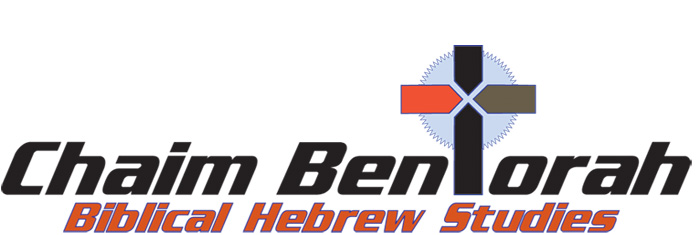Biblical Hebrew
THE ESOTERIC STRUCTURE OF THE HEBREW ALPHABET
I believe there are two words which best describe two approaches to the Hebrew language when it comes to translation. The first is the exoteric nature of the language and the second is the esoteric nature of the language.
Exoteric and esoteric seem to be two words which belong in the cold, dark, dank halls of academia and have no business entering the vocabulary of the average Christian. Yet, these words best describe an important element in translation of the Old Testament.
Exoteric refers to knowledge which is common to everyone, sometimes called common sense. Christians translate the Old Testament using exoteric knowledge. Esoteric refers to knowledge that is only for a select interest group. For instance, a physician may speak to another physician esoterically and say that his patient has suffered an acute inferior myocardial infarction. If that physician were speaking to me he would speak exoterically and say his patient had a heart attack. I am not a physician nor am I versed in medical terminology. The physician would just give me the general understanding of what happened to his patient, but to another physician he would give a more detailed explanation with a deeper and richer understanding.
Sometimes esoteric language is not meant to give a deeper understanding, but is designed to be like a code. For instance in the Gulf War, reporters had a field day with the military’s esoteric language. Esoterically a military spokesman would say they struck a “soft target.” Exoterically, they were saying they were targeting human beings. They spoke esoterically about “collateral damage.” If they were speaking exoterically they would have said: “Civilians were killed.” My favorite esoteric expression was: “An unsatisfactory air to surface interface.” Exoterically they were saying an aircraft crashed.
Throughout history ancient orthodox rabbis and sages would speak to each other esoterically. I was fascinated with this esoteric language and spent the last 35 years making a study of it. I am by no means an expert in this field. I had little use for their codes and secrets. However, their use of the esoteric structure of the Hebrew alphabet did catch my attention, for it was here that I found such use of the esoteric structure of the Hebrew alphabet offered a deeper insight into the language itself.
The Hebrew script, like the script in other cultures grew out of the ancient forms of writing. Basically all the early, ancient script had it’s origins in pictures. For instance the Aleph was pictured as an ox head and it carried a meaning of headship or leadership. This was common for all languages and what we often hear as the Ancient Hebrew script is really the ancient Canannite script. Many cultures shared this script in various forms just as our “English” alphabet is shared by German, Italian, French, Spanish etc. The Ancient Hebrew Script is no more a Hebrew Script than our alphabet is an “English” alphabet as we share this alphabet with other languages. A more accurate title would be a European Script rather than an English Script.
When the Jews went into the Babylonian exile the Hebrew language faced a real danger of being lost and assimilated in the Babylonian Akkadian and Sumerian language. To help preserve the Hebrew language, which the ancient sages and rabbis believed was a sacred language, they developed what has become known as the Assyrian Script or Square Script which is in use today. It is called the Assyrian Script because it was developed by Jewish rabbis while in exile in Assyria. This script was made up of 22 consonants and was used strictly by the Hebrews. This script also had a meaning behind each letter. However, the meaning behind these letters were not a picture of natural, tangible things, but carried a spiritual quality. Each letter described our relationship with God.
It is believed by many orthodox rabbis that Hebrew is the language God spoke when he created the world and the meanings of each letter goes back to the time of creation and was handed down through Oral Tradition. During the time of exile in Assyria, the scribes and sages developed a script which would reflect the spiritual value of each letter as it was taught by prior generations through Oral Tradition. Therefore, the letter Aleph no longer took the form of an ox head but became a combination of three letters, Yod, Vav, Yod which spells the name of God. Hence the first letter of the Hebrew Alphabet begins with God.
Each letter has a number of meanings which are all interrelated. They also carry a shadow which reflects a negative value. When translating the Hebrew exoterically we translate word by word, but when we translate esoterically, we translate letter by letter. Every word in the Hebrew is rooted in a word which is a verb and has three letters which we call the triliteral root word. From this three letter root word suffixes and prefixes are added to give the word a grammatical value as masculine, feminine, singular, plural, etc. Prefixes and suffixes are also added to give a word an article, preposition or a pronoun.
What is important to understand is that when we translate esoterically, we are translating letter by letter. Every word in the Hebrew will explain itself and give us a deeper spiritual understanding. Keep in mind I am referring to the Square Script or Assyrian Script and not the Cannanite Script or what some call the Ancient Hebrew Script. The meanings behind the Ancient Hebrew Script is common to many cultures, but the meanings behind the Square Script or Assyrian Script is strictly found in the Hebrew language itself.
The meanings behind the Ancient Hebrew Script can give us knowledge of the etymology of a word, but the meanings behind the Assyrian Script give us a spiritual value to the word. For example in Genesis 5:19 we learn that God gave us a rainbow as a covenant to us. The word in the Hebrew for “rainbow” is “qos” and simply means bow or curve. That does not tell us too much. You can search through all the lexicons and Hebrew dictionaries but you will not find much more insight into the word “qos” other than a curve or bow. Exoterically, that is about as far as you will get with this word. However, esoterically you will be able to lift the cover off this word and discover a hidden meaning. The word is spelled “Qof, Vav, Shin.” If we translate this word letter by letter, what we will find is that the Qof speaks of a sacrifice, the Vav tells us there is a connection with the Sacrifice between heaven and earth and the Shin teaches us that this connection which will come from this sacrifice will bring us the passion and power of God. As a Christian I really don’t have to tell you any more than that. This rainbow was a sign of the coming of a Messiah who through the sacrifice of his life would bring us into a true relationship with God. But wait, there is more in this esoteric world of the Hebrew. The rainbow which esoterically represents the sacrificial gift of Jesus has a number of colors. For instance the colors of the rainbow are red which symbolizes the blood of this sacrifice, there is green which speaks of a spiritual life that will result from this sacrifice, you also have blue in the rainbow which shows us that this sacrifice will bring a divine revelation and then you have yellow which represent the light and glory of God. This is clearly a picture of Jesus Christ.
For two thousand years Jews have been shunned by the Christian church. Only after Israel became a nation did the Christian world really stand up and take notice of the significant role that the Jewish people play today in our understanding of God. For two thousand years many secrets and mysteries have been hidden away by the esoteric Jewish rabbis because Christian did not believe that anyone who rejected Jesus as the Messiah had anything to offer them. Yet, the Jews are still God’s chosen people, they are still the guardians of the Hebrew language (Romans 3:1-2) and the secrets and mysteries of the Old Testament and even the New Testament when we consider the deep cultural significance of the New Testament and the fact that Jesus Himself was Jewish and very possibly a rabbi.
For over thirty years I hid away in the cold, dark, dank halls of academia in regards to the Hebrew language and taught Hebrew the way a good Christian teacher would teach Hebrew which is to teach Hebrew exoterically. Only in the last few years have I noticed an awakening and hunger among Christians to consider some of the deep mysteries held by the Jewish teachers. Most Christian I meet today feel something very deep inside themselves that there is more to the Old Testament than has been taught in the last two thousand years of Christianity and as a result they long to study the Hebrew language with the hope of finding some hidden spiritual treasures.
The manual is designed to help any Christian, regardless of their academic background, regardless of the fact that they never studied Hebrew, to unlock the mysteries found in the Old Testament. Christians wax lyrical of how the Holy Spirit leads us into all truth and how it is the Holy Spirit who reveals the Word of God to us. I can say without hesitation that the key to unlocking the mysteries found in the Old Testament using the Esoteric Hebrew will come from one’s dependence upon the Holy Spirit in a way that they have never experienced in the past.
In the manual I am not only introducing the Hebrew exoterically as I had taught it for many years in a Bible College, but I am also introducing the esoteric nature of the language as I never taught it before.







Recent Comments